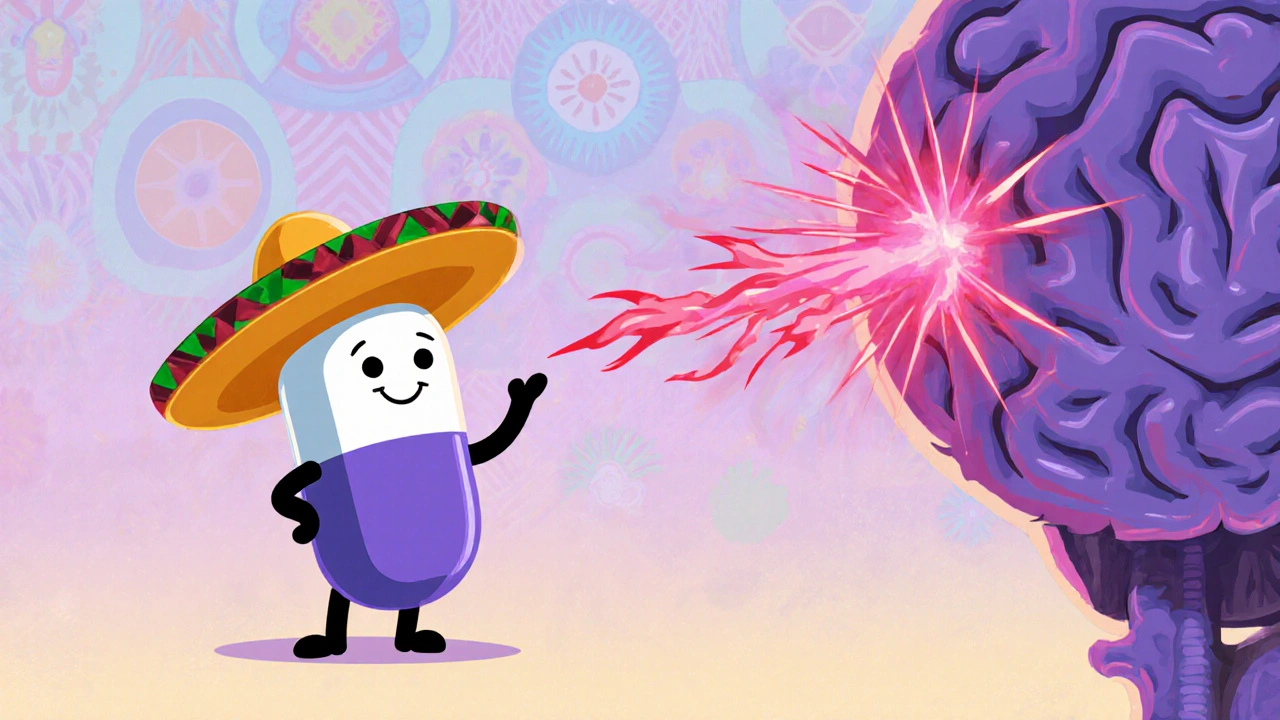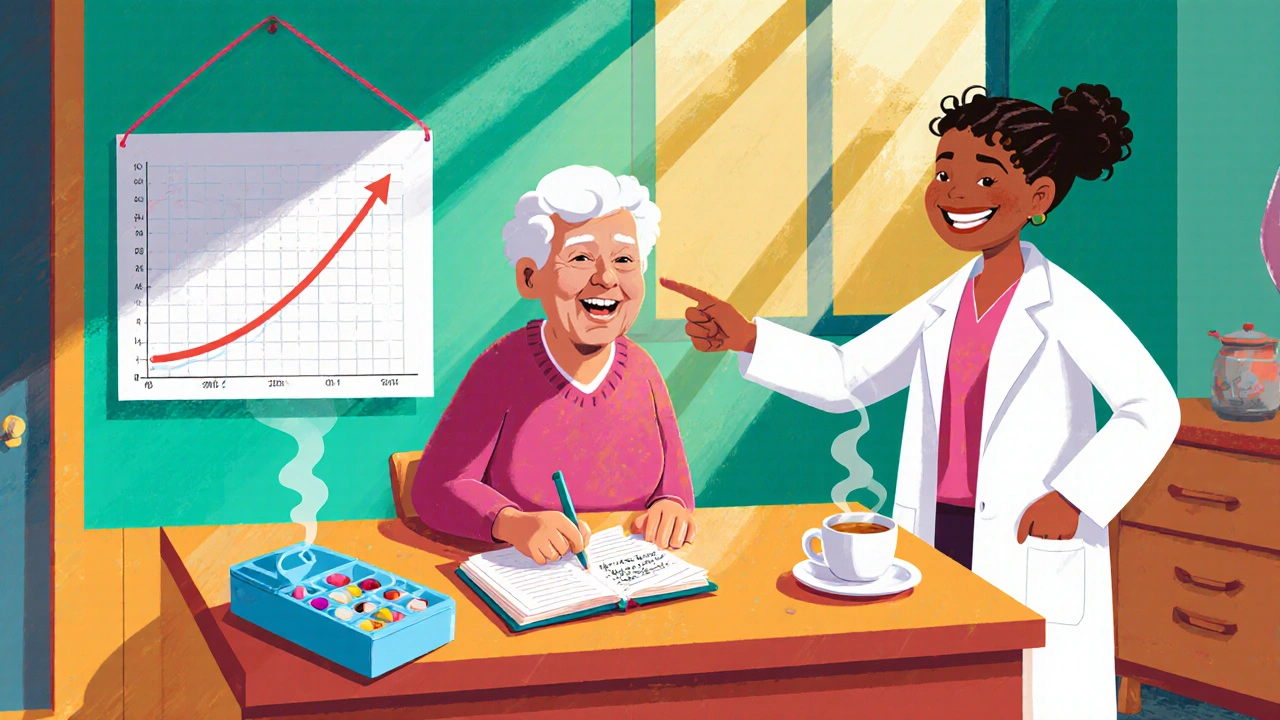When faced with the sharp, electric‑shock pain of Trigeminal Neuralgia, a chronic facial nerve disorder that triggers sudden, stabbing sensations along the jaw, cheek, or eye, many patients wonder which medicines might actually help. One drug that often shows up in the conversation is baclofen, a muscle‑relaxing medication originally approved for spasticity.
What Is Trigeminal Neuralgia?
Trigeminal Neuralgia (TN) affects the trigeminal nerve, the fifth cranial nerve that controls sensation in the face. The hallmark is brief, lightning‑like attacks that can last seconds but feel excruciating. Typical triggers include brushing teeth, chewing, or even a light breeze. Epidemiology studies from 2023 estimate that about 12 per 100,000 people develop TN, with a higher incidence after age 50.
How Baclofen Works
Baclofen is a selective agonist of the GABA_B receptor. By binding to these receptors in the spinal cord and brainstem, it reduces the release of excitatory neurotransmitters, dampening abnormal nerve firing. Though its primary label is for muscle spasm control, the same inhibitory effect can calm the hyper‑active trigeminal pathways that generate pain.
Clinical Evidence for Baclofen in TN
Randomized controlled trials (RCTs) specifically targeting baclofen for TN are scarce, but a 2022 multicenter open‑label study involving 78 participants reported a 44 % reduction in attack frequency after 12 weeks of titrated baclofen. Another retrospective review of 112 patients showed that when baclofen was added to first‑line carbamazepine, 31 % achieved complete pain freedom versus 9 % with carbamazepine alone.
While not a headline‑making FDA‑approved indication, the data suggest baclofen can serve as a useful adjunct, especially for patients who cannot tolerate high doses of anticonvulsants.

Dosage and Administration
- Start low: 5 mg taken orally three times daily.
- Increase by 5 mg every 3-4 days based on tolerance.
- Target maintenance dose typically ranges from 20 mg to 60 mg per day, divided into 3‑4 doses.
- Never skip a dose abruptly; taper down over 1-2 weeks to avoid withdrawal.
Kidney or liver impairment may require a slower titration schedule. Always coordinate with a neurologist or pain specialist before making changes.
Benefits Compared to First‑Line Drugs
Carbamazepine and gabapentin remain the go‑to medications for TN because they directly target neuronal hyperexcitability. Baclofen’s unique advantage lies in its muscle‑relaxing properties, which can alleviate associated jaw clenching or facial muscle tension that sometimes worsen pain.
| Medication | Mechanism | Typical Dose for TN | Onset of Relief | Common Side Effects |
|---|---|---|---|---|
| Carbamazepine | Voltage‑gated Na⁺ channel blocker | 200‑1200 mg/day | 1‑2 weeks | Dizziness, hyponatremia, rash |
| Gabapentin | Calcium channel α2δ subunit binder | 900‑3600 mg/day | 1‑2 weeks | Fatigue, peripheral edema, weight gain |
| baclofen | GABA_B receptor agonist | 20‑60 mg/day (divided) | 2‑4 weeks | Somnolence, weakness, lowered blood pressure |
In short, baclofen can be a useful adjunct for patients who need extra muscle relaxation or cannot tolerate the higher doses of carbamazepine.

Side Effects and Safety Tips
- Somnolence: Occurs in ~30 % of users; avoid driving until you know how you react.
- Weakness: May affect grip strength; start with low doses if you have a physically demanding job.
- Dizziness: Particularly when standing quickly; rise slowly.
- Hypotension: Monitor blood pressure if you’re on antihypertensives.
- Rarely, withdrawal seizures can happen if the drug is stopped abruptly after long‑term use.
Always discuss other medications-especially anticonvulsants, antidepressants, or alcohol-with your prescriber, as baclofen can enhance central nervous system depression.
Practical Tips for Patients
- Keep a pain diary: record attack frequency, intensity, and any new side effects.
- Coordinate with a neurologist for dose adjustments; most clinicians increase by 5 mg increments.
- Use a pill organizer to avoid missed doses, which can trigger rebound pain.
- Stay hydrated and maintain a balanced diet; dehydration can worsen muscle cramps.
- If you experience severe weakness or trouble breathing, seek medical attention immediately.
Frequently Asked Questions
Can baclofen treat trigeminal neuralgia on its own?
Baclofen is usually added to a primary drug like carbamazepine. Some patients report enough relief to stay on baclofen alone, but evidence is limited, and most specialists recommend it as an adjunct.
How long does it take to feel the effect?
Most people notice a reduction in attack frequency after 2-4 weeks of a stable dose. Full benefit may require 6-8 weeks.
Is baclofen safe for older adults?
Older adults are more prone to dizziness and falls. Starting at 2.5 mg three times daily and titrating slowly helps mitigate risks.
Can I combine baclofen with other muscle relaxants?
Combining two central-acting muscle relaxants can increase sedation and respiratory depression. Always get a doctor’s okay before adding another agent.
What should I do if I miss a dose?
Take the missed dose as soon as you remember, unless it’s almost time for the next dose. Never double up, as that raises the risk of severe drowsiness.
Managing trigeminal neuralgia often requires a personalized mix of medications, lifestyle tweaks, and sometimes surgery. Baclofen offers a different mechanism that can fill gaps left by anticonvulsants, especially when muscle tension amplifies pain. Talk with your neurologist about whether a baclofen trial fits your treatment plan.


Comments (12)
the sagar
Baclofen hits the GABA_B receptors directly, cutting the nerve‑fire that drives TN attacks.
Grace Silver
Imagine the brain as a bustling marketplace where signals clash and calm is a rare commodity. Baclofen steps in like a quiet mediator, easing the hyperactive chatter of the trigeminal nerve. The guide lays out dosing steps that feel like a gentle climb rather than a sudden plunge. It also warns about withdrawal, reminding us that even helpers can become foes if ignored.
Deborah Galloway
Thanks for that vivid picture, it really helps me see why muscle relaxation matters. I’ve been scared of the dizziness side effect, but hearing it framed as a trade‑off feels less daunting. Keeping a pain diary, as you mentioned, can also catch those subtle shifts before they spiral.
Tamara Schäfer
I love how you broke down the fear factor, it’s something many of us struggle with. Do you think starting at 2.5 mg three times a day is safe for most seniors? I’ve read that gentle titration can keep the dizzyness down while still getting benefit. Also, the guide’s tip about staying hydrated is gold – dehydration can amplify cramps. Keep sharing your journey, it encourages others to stay on track. Together we can figure out the best balance.
Max Lilleyman
Honestly, relying on baclofen feels like a lazy shortcut when carbamazepine could do the job. 😒 Adding another muscle relaxant just piles on sedation risk. If you’re not tolerating the first line, maybe it’s time to revisit dosage or consider surgical options instead of stacking meds.
Brett Witcher
While your verdict captures a common skepticism, the empirical data from the 2022 open‑label study cannot be dismissed outright. A 44 % reduction in attack frequency suggests a statistically meaningful adjunct effect, particularly for patients contraindicated to high‑dose carbamazepine. Such nuance warrants a more measured appraisal than outright dismissal.
Benjamin Sequeira benavente
Don’t let fear stall your progress – push the titration slowly and you’ll see the muscle tension melt away! The key is consistency: take every dose, track attacks, and adjust every few days. You’ve got this, the relief is within reach.
Shannon Stoneburgh
Just because you push harder doesn’t mean the side effects disappear. Weakness and somnolence can still hit, especially if you jump doses.
Lennox Anoff
The shadows of chronic pain loom larger than any single medication can ever illuminate.
Baclofen, though modest in its fame, steps onto the stage with a quiet resolve to tame the electric storms of TN.
Yet every triumph in neuropharmacology is shadowed by the specter of side effects that can unhinge a life.
Dizziness may turn a simple walk into a vertiginous ballet of uncertainty.
Weakness can steal the strength from a farmer’s hands, the grip from an artist’s brush.
Somnolence lurks like a thief in the night, stealing precious hours of wakefulness.
The guide wisely urges a tapered withdrawal, for an abrupt stop can summon seizures, a cruel irony.
For the elderly, the balance is razor‑thin; a misstep can precipitate a fall that shatters more than bone.
Nevertheless, the data whisper of hope: a near‑half reduction in attacks for those who persevere.
The combination with carbamazepine, as the study notes, can lift a patient from the brink of desperation.
Crucially, keeping a meticulous pain diary transforms the abstract into concrete, empowering both patient and physician.
Hydration, often overlooked, plays a silent role in preventing the dreaded muscle cramps that accompany therapy.
The moral of the story is not to idolize any single pill but to sculpt a personalized regimen.
Surgery, diet, and mental resilience are allies that march alongside pharmacology.
In the end, the battle against trigeminal neuralgia is fought with patience, vigilance, and the courage to adapt.
Bianca Larasati
Rise up, fellow warriors! The pain may feel like a firestorm, but each disciplined dose of baclofen is a bucket of water you pour on the flames. Stay the course, record every tremor, and the storm will eventually calm.
Abby W
Whoa, I love the hype 🙌 but remember not to ignore the blood pressure drop – check it daily or you might end up light‑headed during a marathon of meds! 😅
Clinton Papenfus
Indeed monitoring vital signs is indispensable the protocol mandates regular sphygmomanometer readings alongside dosage adjustments to mitigate hypotensive events and ensure patient safety.